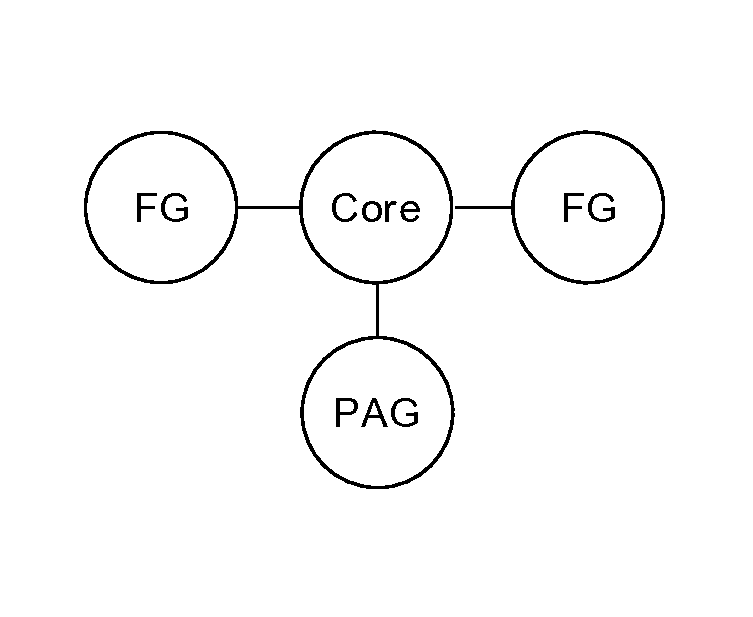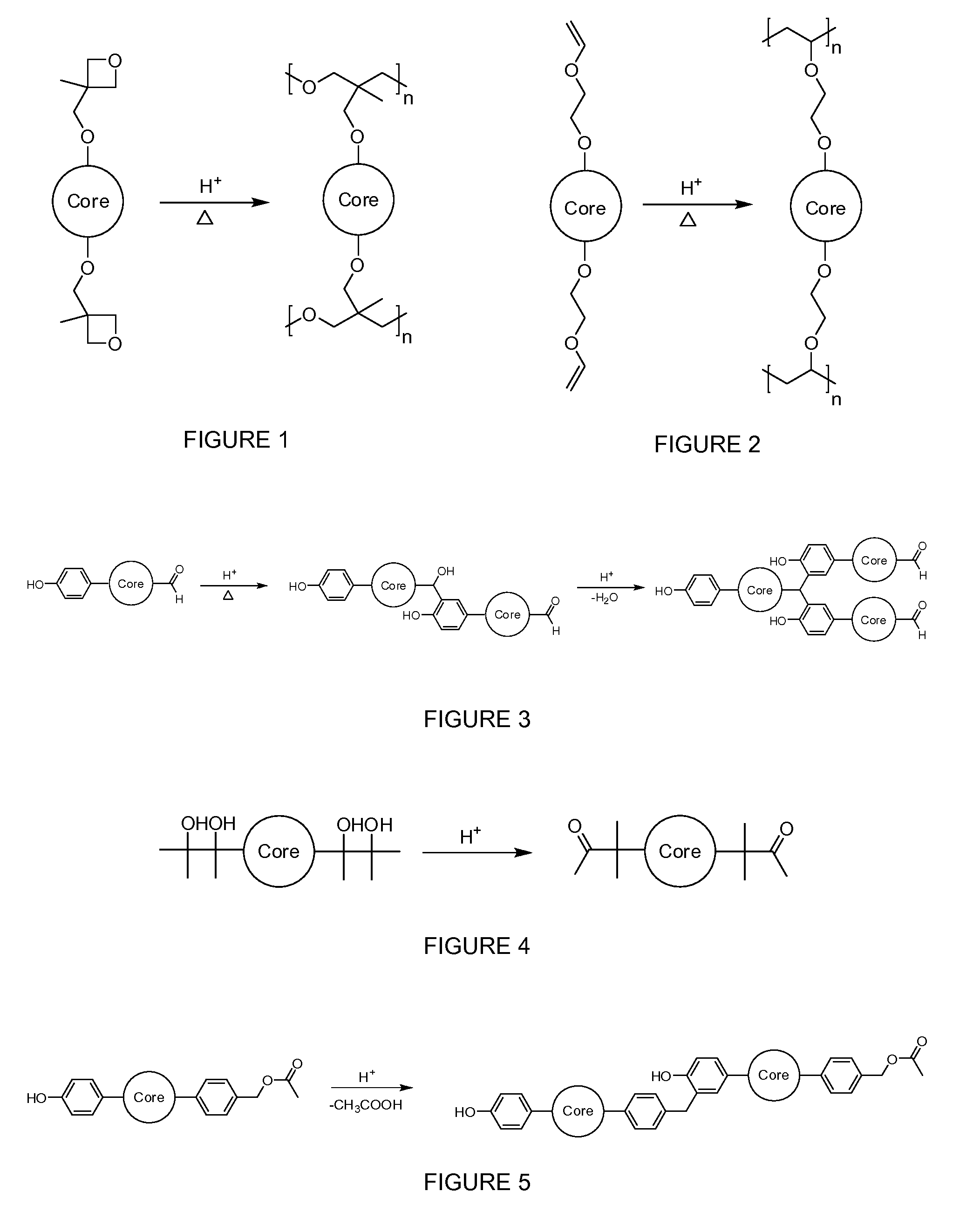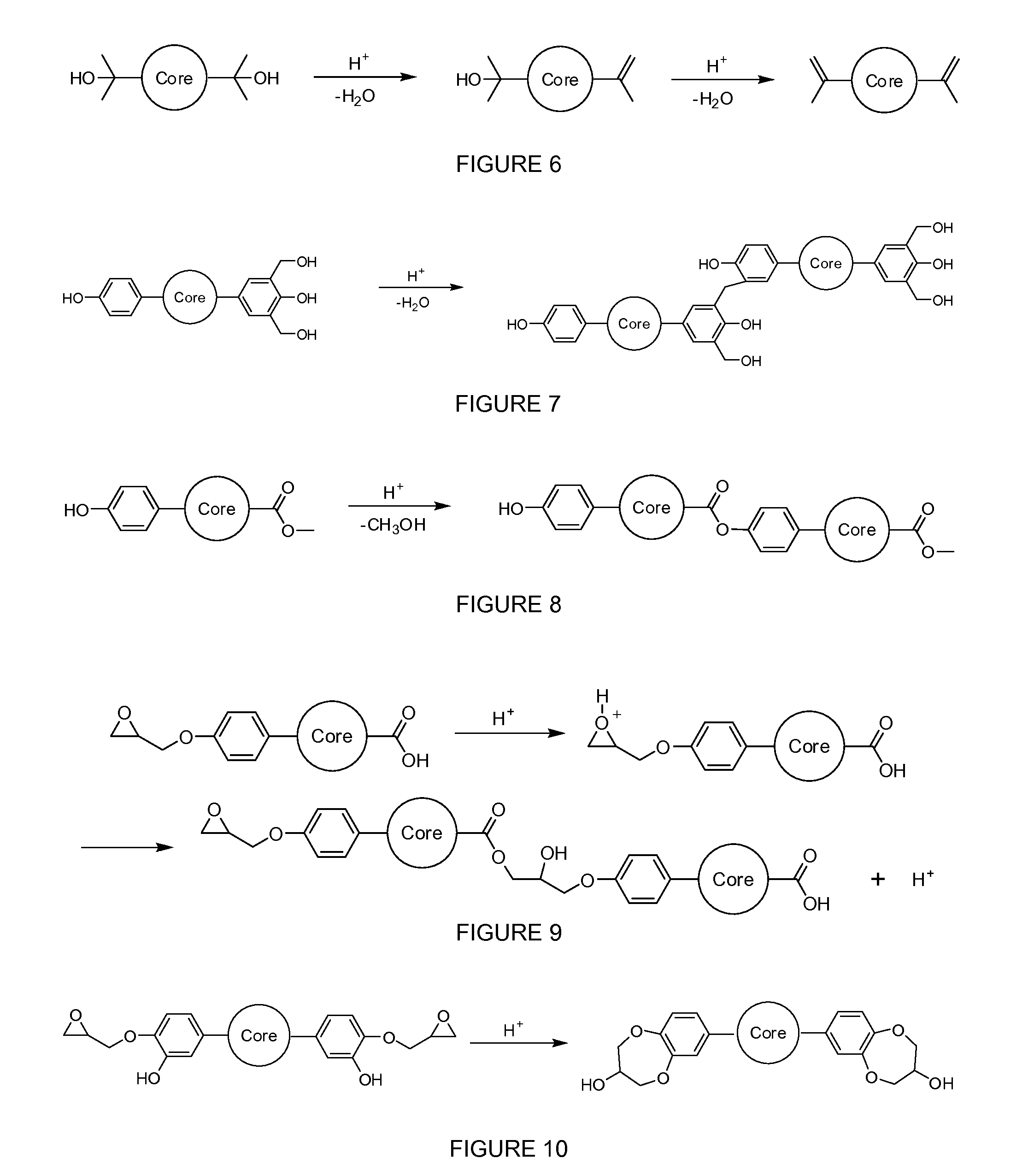Negative tone molecular glass resists and methods of making and using same
a negative tone, molecular glass technology, applied in the field of resists, can solve the problems of loss of up to approximately 50% of the mass of the resist, loss of pattern quality, acid diffusion, etc., and achieve the effect of reducing the solubility of at least a portion, facilitating the decrease in and reducing the solubility of the molecular glass
- Summary
- Abstract
- Description
- Claims
- Application Information
AI Technical Summary
Benefits of technology
Problems solved by technology
Method used
Image
Examples
example 1
Influence of Solubility Switching Mechanism on Resist Performance in Molecular Glass Resists
[0094]A variety of solubility switching mechanisms (i.e., decreasing the solubility of a molecular glass) have been proposed and used for molecular resists. These include positive tone chemically amplified compositions with several different types of protecting groups based on phenol deprotections and carboxylic acid deprotections. A few different negative tone materials have also been used, based on either epoxide ring opening, cross-linking, or hydroxyl cross-linking via an additional additive. Although many solubility switching mechanisms have been used, they have been investigated on many different molecular cores in such a way that no direct comparison of the advantages and disadvantages of each solubility switching scheme could be directly made on a common molecular core platform. In addition, it would appear that the majority of previous publications report only the positive aspects of...
example 2
Epoxide Functionalized Molecular Resists for High Resolution Electron Beam Lithography
[0121]Most electron beam resists used today are non-chemically amplified systems, such as PMMA, ZEP, and HSQ, that allow for very high resolution, but at the cost of low sensitivity. This means that the write times for many patterns are very long and costly. A much more sensitive chemically amplified resist (CAR) would be preferred to reduce write time, but conventional CARs have not been widely used because they have limited resolution due to photo-acid diffusion and poor line edge roughness (LER). LER is particularly a problem for resists used in photomask and imprint template making because LER in the mask or template can be transferred to the resist. As feature sizes shrink using optical lithography, the aerial image LER becomes larger relative to the actual LER on the mask due to the so-called mask error enhancement factor (MEEF), and thus the amount of LER transferred from the mask to the res...
example 3
High Resolution Negative Tone Molecular Resist Based on Di-Functional Epoxide Polymerization
[0135]For both extreme ultraviolet (EUV) and e-beam lithography, it is desired that resists combine good resolution, sensitivity, and line-edge roughness. Non-chemically amplified resists (non-CARs), such as PMMA, ZEP, and HSQ, generally have the advantage of high resolution and good line-edge and line-width roughness (LER and LWR), but at the cost of very poor sensitivity which leads to high exposure doses and low exposure tool throughputs. The poor sensitivity generally makes them unsuitable for EUV lithography and limits their usefulness in many e-beam applications. Chemically amplified resists (CARs) replaced non-CARs as the workhorse material for high resolution optical patterning because their significantly better sensitivity and contrast allows for much higher throughputs and excellent pattern profiles under the degraded optical aerial images resulting from continued extension of optic...
PUM
| Property | Measurement | Unit |
|---|---|---|
| wavelength | aaaaa | aaaaa |
| thickness | aaaaa | aaaaa |
| thickness | aaaaa | aaaaa |
Abstract
Description
Claims
Application Information
 Login to View More
Login to View More - R&D
- Intellectual Property
- Life Sciences
- Materials
- Tech Scout
- Unparalleled Data Quality
- Higher Quality Content
- 60% Fewer Hallucinations
Browse by: Latest US Patents, China's latest patents, Technical Efficacy Thesaurus, Application Domain, Technology Topic, Popular Technical Reports.
© 2025 PatSnap. All rights reserved.Legal|Privacy policy|Modern Slavery Act Transparency Statement|Sitemap|About US| Contact US: help@patsnap.com



